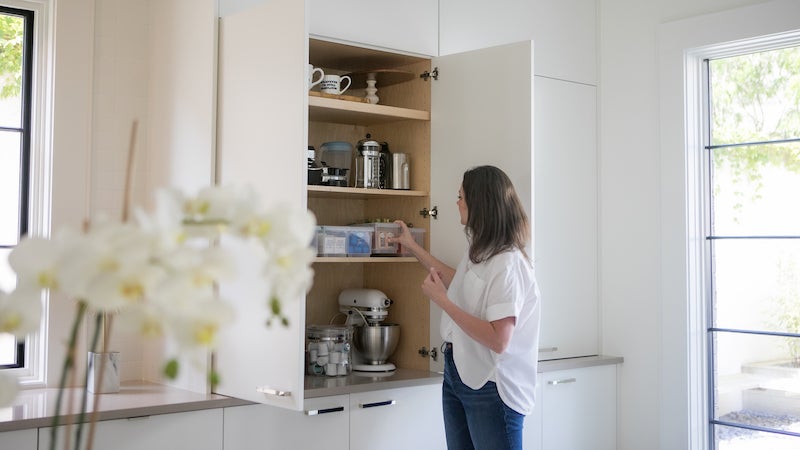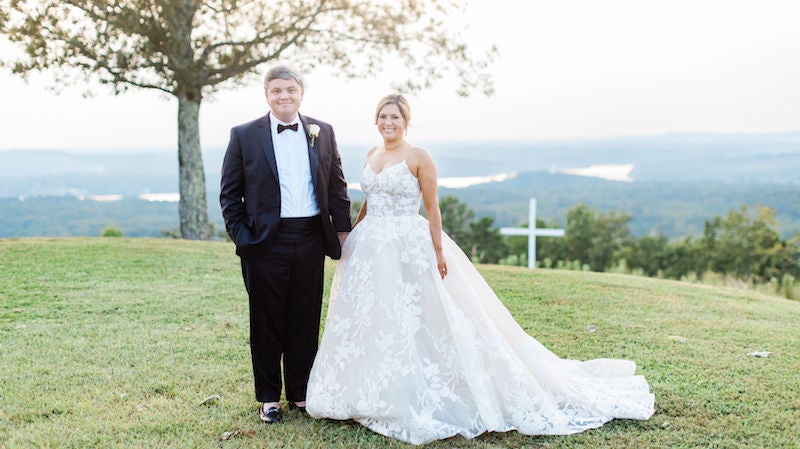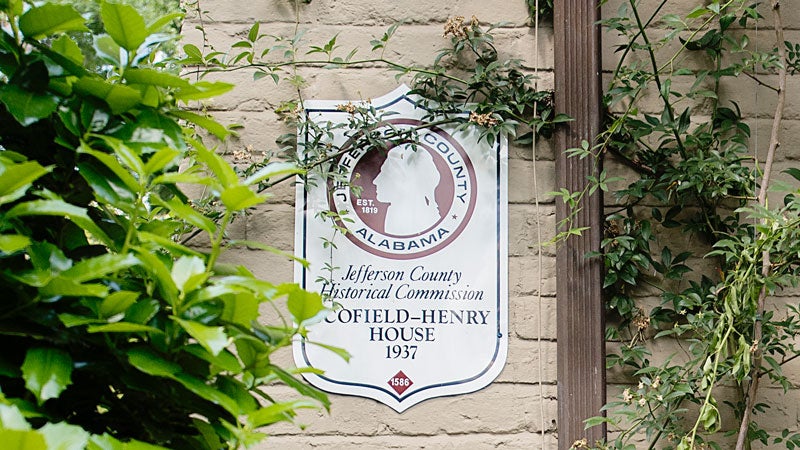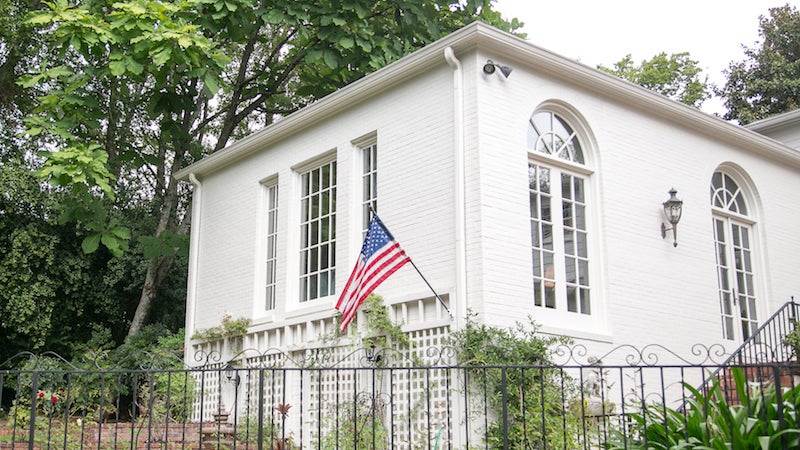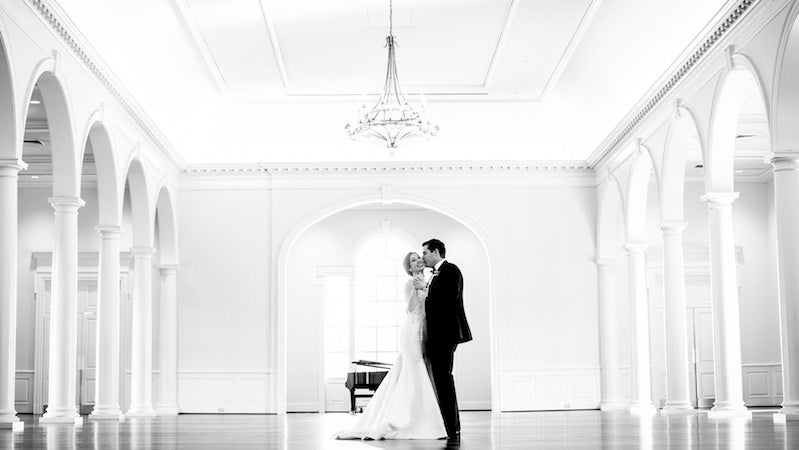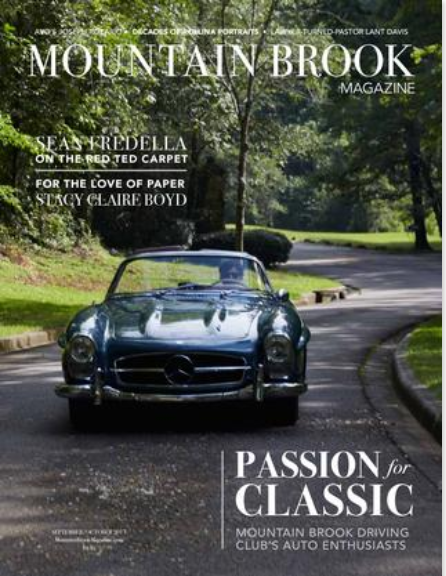By Madoline Markham
Photos by Rebecca Wise
Clara Schoen grew up in a household of four kids, and her mom ran a tight ship. If one item came into the house, one went out. So from an early age, Clara learned that you don’t always need more space—you often need less stuff, and that it is healthy to not be emotionally attached to things.
What Clara didn’t know as a child was that she’d later apply those guiding principles to the organization business, The Home Organized, she started three years ago. Along the way she’s also learned a lot of psychology and the right leading questions to ask in working with clients around Birmingham to declutter and organize their homes. What she does for a client with small children is different from an empty nester, and no two jobs are the same. Regardless of the household, in each step of her work she seeks to marry function and fashion since you are more likely to maintain something that looks good.
For her, though, organization starts not with a system but with a person. Before even starting a job, she wants to know if a potential client is open to change. “If they are not ready for us to get rid of things, it won’t turn out well,” she notes. Once a client is on board, she asks all kinds of questions about how everyone in the household uses a space to better understand them.
When it’s time to start the job, Clara’s team takes everything out of a particular space they are working on and categorizes it. Next they get the client to walk through the items to decide what stays and what goes. Then it’s time for a mental break from what can be an emotional process, and after the break the client takes a second pass. When the items go back into a closet or pantry or play room, they have a system, and each item has a “home” to return to that is labelled. “Houses get messy, but that way you can get back into system easily,” she says.
Often in this process, Clara finds herself giving clients permission to rid of items that are creating clutter. “It’s your house. Your stuff shouldn’t dictate it. You should dictate it,” she often says. For example, Clara has a chair that was her grandfather’s she remembers him sitting in in her home today, and she kept tea stirrers from her grandmother that she uses for her coffee every day. “But I didn’t keep all of her costume jewelry and silverware,” she notes. “I didn’t want to clutter up my house, but the things I saved were a good remembrance.”
At the end of the day, Clara knows physical clutter can become mental clutter. ”My calling is to minister to people and love on them,” she says. “I want you to enjoy your space and not worry about it.”
To see these principles in action, Clara showed us around her client Laura Clark’s Mountain Brook home and told us about the techniques she applied based on how Laura and her two daughters use their spaces.
Learn more about The Home Organized at thehomeorganized.com or follow @thehomeorganized_ on Instagram or @thehomeorganized on Facebook.
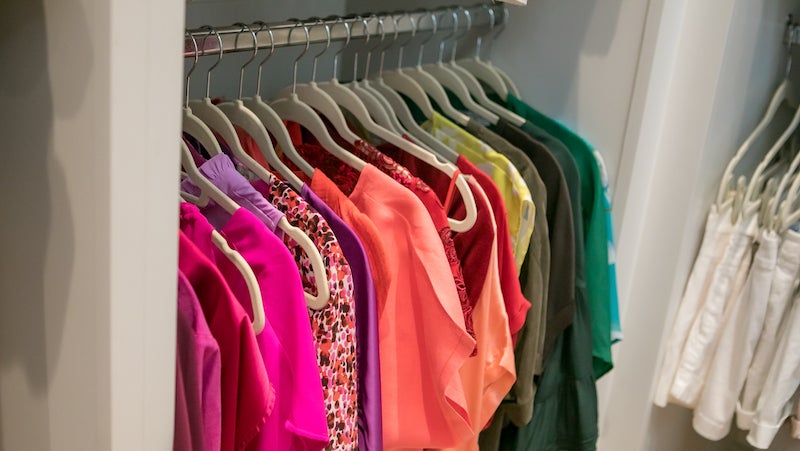
Master Closet
Laura’s casual clothes are in a section of her closet she sees when she first walks into the closet since she wears them the most often. Clara likes to first section off clothes by how often they are used and then color block within a section, making sure that you can see everything. To color block, she generally uses the orders of the colors of a rainbow— ROY G BIV.

Laura’s dressier purses and shoes are displayed on closet shelves to allow her to feel like she’s shopping in her own closet.
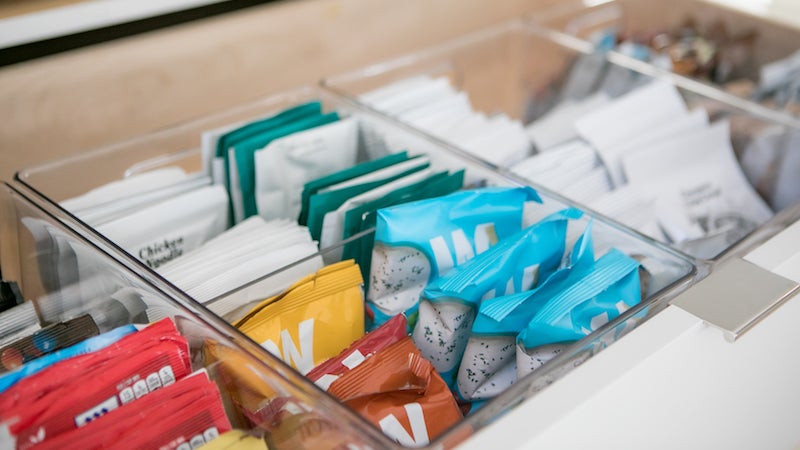
Pantry
Here are some elements of organization Clara used for Laura’s pantry:
Drawer Dividers. These maximize space, and you can pull out a bin and carry it to a countertop to use as well.
Priority Order. Items she uses more frequently live on lower shelves so they are easy to access. Laura’s daughter likes to bake but not every day, so baking goods are stored on the top shelves.
Bins. Storing items in bins allows you to grab one out at a time and retrieve what you need easily without moving too many things around.
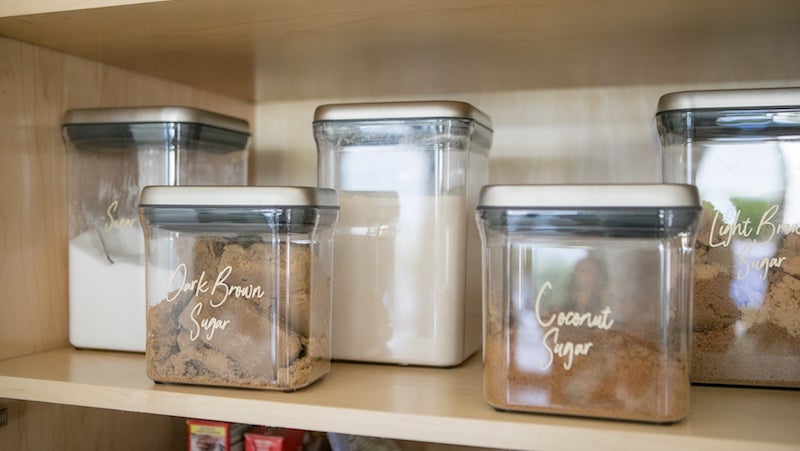 Decanting. Flours, sugars and other baking goods are decanted (or removed from their container), as well as Laura’s grab-and-go meals, and placed in acrylic containers. Clara recommends this technique for items that aren’t used as often. It allows you to easily see how much of a product you have.
Decanting. Flours, sugars and other baking goods are decanted (or removed from their container), as well as Laura’s grab-and-go meals, and placed in acrylic containers. Clara recommends this technique for items that aren’t used as often. It allows you to easily see how much of a product you have.
Turntables. Turntables (aka lazy Susans) maximize the space so you don’t have to look behind items.
Labels. Labeling containers clearly defines what goes in them, especially for kids or visitors to the household. Plus, a gold script sure looks pretty! The stickers can always be changed out if contents change too.
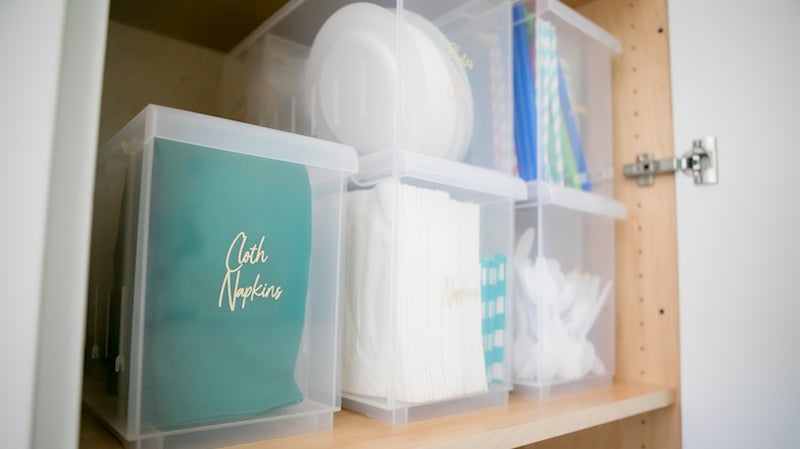
Entertaining Storage
Hallway cabinets hold entertaining items Laura doesn’t use on a regular basis. These stacking containers make good use of vertical containers, and like the pantry, they are labeled by item type so anyone can return them to their “home” in the space.

